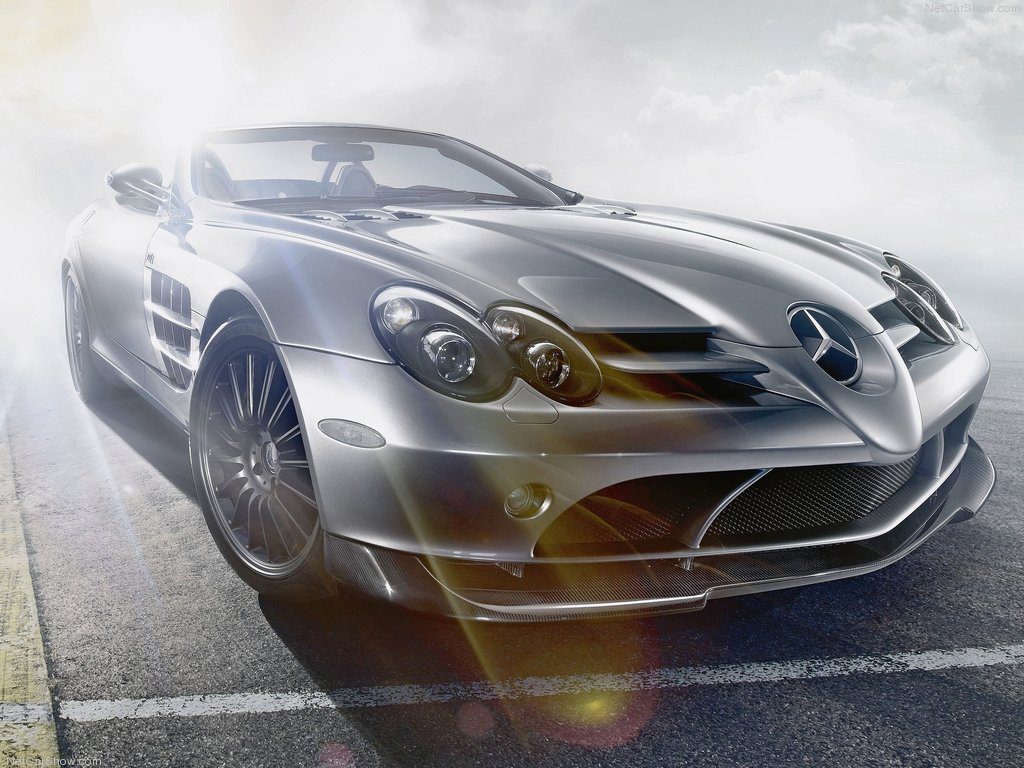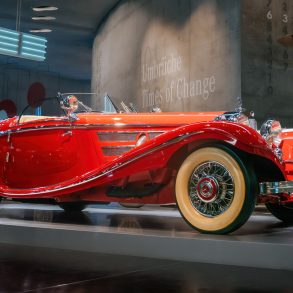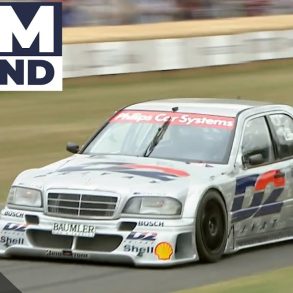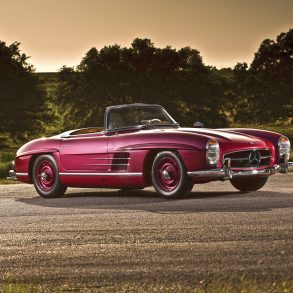The Mercedes-Benz SLR McLaren is just a year shy of two decades old. However, such is the ageless design of the car that one might be forgiven for assuming it was only manufactured a few years ago. The sleek, long-nosed grand tourer is the result of a collaboration between two automobile powerhouses—German manufacturer Mercedes-Benz and British-based McLaren Automotive.

The two carmakers were already in a successful joint Formula One partnership, and it only made sense that they would leverage that collaboration to create a road-going car. The public got the first sighting of the production version at the 2003 Frankfurt Auto Show. It marked the next phase of a project that had kicked off a few years before.
Tracing the Origins of the Mercedes-Benz SLR McLaren

The roots of the SLR McLaren date back to the ’50s, an era when Mercedes dominated the racing circuits. It was a period that witnessed the Silver Arrows consistently racking up victories in Formula One, sports car racing and rallies. That was when Mercedes Benz developed the original SLR.
The iconic sports car was dubbed the Mercedes-Benz 300 SLR, short for ‘Sport, Leight, Rennsport’—that’s German for ‘Sport, Lightweight, Racing’ in reference to the car’s lightweight construction and performance attributes. It was based on the Mercedes’s W196 Formula One racer, a car that was so technologically superior to its rivals that it won nine out of twelve races in which it started during the 1954-1955 racing season.

The Mercedes-Benz 300 SLR participated and emerged victorious in the 1955 World Sportscar Championship season. Arguably, the most notable victory during that season was the 1,000-mile Mille Miglia race through Italy. Sir Stirling Moss drove the 300 SLR with the now famous 722 race number and won with a record-breaking average speed of 157.65km/h. He would later declare that the 300 SLR was ‘the greatest sports car ever built by anybody anytime.’
It is this incredible machine, then, that largely inspired a respawn, albeit a much more modern interpretation. At the 1999 North American International Auto Show, the team from Mercedes and McLaren presented the Vision SLR concept. The car blended luxury and comfort with sportive character and performance. Buoyed by the positive reception, the carmakers decided to take the next step and move the concept to full production.
Design & Performance of the Mercedes-Benz SLR McLaren

Like the predecessors that inspired its creation, the Mercedes-Benz McLaren SLR was a tech fest. Perhaps unsurprisingly, it featured the application of several racing technologies taken straight from Formula One. The frame was highly advanced, with a monocoque carbon-fibre tub for the main chassis and sub-frames in the front and rear. Based on safety designs from McLaren’s F1 experience, the entire structure could absorb four times as much energy as steel in an impact.

Exterior Styling
The exterior styling was characterized by a Formula One style cone upfront, exaggerated air vents behind the front tires, and side-mounted exhausts. Elegant butterfly doors completed the look of the sleek sports car.
Engine & Power
At the heart of the SLR McLaren is a formidable powerplant that gave the car its potency. Unlike most supercars of that era, the SLR McLaren had its engine mounted in front, just behind the front axle. That resulted in a truly impressive 49:51 weight distribution front-to-rear—a great boost for handling and traction control.

The hand-built AMG unit is a 5.4-litre supercharged V8 that cranks out 617 hp at 6,500 rpm and 575 lb-ft of torque at 3,750 rpm. Today that may not seem like much for a limited-series supercar, but remember that the SLR McLaren had its debut way back in 2003. Powerwise, the SLR McLaren could hold its own against heavyweights like the Porsche Carrera GT and the Pagani Zonda F.
Driving & Braking
All that power was not just for show. The SLR McLaren was a road rocket. The rear-wheel-drive supercar could hit 60 mph in just 3.1 seconds, and it was one of the few cars at the time that had a top speed north of 200 mph.
To scrub off all that speed, the SLR McLaren was fitted with carbon ceramic brakes—one of the first production cars to be so equipped. A dry sump system allowed the engine to be mounted lower, dropping the centre of gravity and thus improving overall handling.
The car also featured active aerodynamics, another F1 inspiration. A spoiler mounted on the rear integral air brake flap can be deployed for downforce or additional braking power.
The Mercedes-Benz SLR McLaren Isn’t Perfect

As great as it was, the SLR McLaren wasn’t without faults. In 2006, the $450,000 supercar was the subject of a major recall, one that affected all 433 units in the States at the time. It was discovered that a potential fault with the electrical system and the alternator could result in the car catching fire. Thankfully, there were no such reported cases at the time of the recall.
Low Speed Handling Issues
The unique low-slung design of the SLR McLaren is one of its most significant stand-outs. However, it’s also one that came with a price. That long nose and the limited rear visibility made any maneuvering at low speeds a tricky prospect.
These niggles, though, are more than offset by what the sublime supercar had to offer. In addition to its superlative performance. The SLR McLaren was equipped with creature comforts like power seats and air-conditioning. It even had a premium seven-speaker Bose sound setup and a navigation system.
The Mercedes Benz SLR McLaren: One for the Ages

The Mercedes-Benz SLR McLaren was around from 2003 to 2009. During that time, the original model spawned a number of variants, including the 722 Edition, 722 GT and the SLR Stirling Moss.
Popular car collector Jay Leno once described the SLR McLaren as ‘the perfect compromise between road car and racer.’ That statement summarises what Mercedes Benz and McLaren set out to achieve with the SLR McLaren.
Successful collaborations are rare in the automobile industry. While there will undoubtedly be more partnerships in future, the drive towards electrification and other automotive trends means there may never be another car like the Mercedes Benz SLR McLaren. That alone makes it all the more special, rightly deserving of a spot in the Automobile Hall of Fame.










